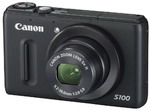Tuesday, October 2, 2007
Photo Printing Paper Q&A Part 1: HP
Posted by Jason Dunn in "ARTICLE" @ 03:00 PM
Digital Media Thoughts: HP obviously feels paper is an important part of their printer business – I counted just over 40 different paper sizes. How many types of printer paper does HP currently offer, and have you hit the ceiling in terms of paper development, or are there new sizes and finishes yet to be introduced?
Thom Brown [HP]: Please find the attached HP Paper Guide for HP's complete desktop paper offering. HP currently offers about 50 types of desktop or small format size papers for North America which range in size from 4"x6" up to 13"x19" and are available in multiple finishes for both inkjet and laser printers, falling in to solutions for everyday plain paper printing to premium business communication to professional quality photo. HP Paper is an extremely important part of the printing process. It truly completes the printing experience and is just as important as HP ink and HP printers.
It's more than just paper, it's what you touch, feel, and archive. It's what you hand to your client as a direct expression of your business. It's what you give your grandmother to show off the latest image of her grandchild. While HP does currently offer satisfying products, we are constantly tweaking / revising to improve overall performance, ease of use, and customer experience. For example, you would think plain paper has hit the development ceiling, it has not. Recently HP introduced ColorLok everyday plain papers which by design create bolder blacks, more uniform vivid colors, and faster drying. We also just released a new version of HP Everyday Photo Paper. This improved version offers faster drying, increased smudge resistance, and is now compatible across a wide range of printers.
For ease of use improvement we've expanded AutoSense to HP Premium and Premium Plus Photo Papers. The basics behind AutoSense is that the HP Photo Paper tells the printer exactly what type of paper it is and automatically sets the printer to the optimized speed and quality settings. Among other benefits, AutoSense also catches sidedness and won't allow you to print on the wrong/uncoated side of the paper. The result is a get it right the first time 20-second 4"x6" borderless lab quality photo done in the convenience of your home.
DMT: What would you say to those people who were buying generic photo paper for their HP printers – does HP-branded paper offer an advantage over generic photo paper?
HP:HP branded papers most definitely offer an advantage with HP printers and HP supplies over non-hp papers. HP paper is not an afterthought. Our printers, print drivers, inks, and papers are all designed and developed together to work as a finely tuned system. If one component of that system is changed, like using non-HP photo paper, the print outcome is sub-optimal. Here's a potential scenario of using a non-HP branded photo paper. The main point is that with non-HP, performance of every step is an unknown. You can also think of it as Maslow's hierarchy of needs whereas each step must be fulfilled to move on to the next.
1. Does it work? Will the non-HP photo paper feed properly through the printer? That is does it pick at all? Will it double pick two sheets at once and cause a jam? If it does pick does the paper skew? This becomes extremely important in varying temperature and humidity. We know exactly the paper path tolerances, the materials that come in contact with the paper along the paper path, and how they interact in different environments. HP runs thousands and thousands of papers through the print paths to optimize the pick and feed. The result is reliable sheet feed with HP papers in HP printers.
2. Does it look good? OK, you got the non-HP paper to feed. The next challenge is ink media interaction. Does the ink dry? Does the ink puddle? If it does dry, does it dry at a constant rate? How far does the ink penetrate the coating, does it sit on the surface or penetrate at a constant distance? How do color inks mix? How does whiteness of the paper effect color balance? If multiple prints were left in the printer output tray would the pages stick together? We know the answers, we know exactly how the inks interact with the paper to deliver the best output and experience. For example, we know exactly how HP Advanced Photo Paper works with the HP 02 inks that are in the new HP Photosmart D7400 series printer. When you print the image of the Station 49 fire truck the print out is fire-truck-red. With non-hp photo paper it may be brick-truck-red or watermelon-truck-red.
3. Does is last? Wow, so you may have been able to get a print out that is somewhat acceptable, albeit not exactly what you were expecting, what about fade resistance and durability? Is that somewhat acceptable print turn unacceptable after 1 year? Does the paper itself turn yellow after being stored in your photo album? What if the print is exposed to Summer humidity on the Gulf? HP knows there's more to a print than the immediacy of the print, there's also the life of the print. Again teams of HP ink and paper engineers have worked in concert to develop great performance. HP delivers dye-ink based prints that achieve the fade resistance levels of pigmented ink systems. HP has been a forerunner in creating fade resistant photos. For over half a decade we've offered home printing systems that can achieve up to 100-years of lightfade resistance as rated by Wilhelm Imaging Research. Now we're achieving beyond 200 years with our Vivera pigmented inks and HP Advanced Photo Paper and HP digital fine art papers. Note that traditional prints (silver halide) from a lab are rated at best 40-years. And it's not just the ink, it's HP Vivera inks and HP papers. If you were to substitute with a non-hp photo paper that rating can drop to less than two years! This is frightening, especially for an uneducated consumer. A customer would have to re-print (assuming they still have access to the original image file) that photo on non-hp photo paper 50+ times to achieve the same life of print performance as the HP. This is not cost or time effective. I have a great software tool that visually simulates fading of HP vs. non-hp over time using any .jpg image. Please contact me if you wish to use this or even post it on your website.
Time and time again HP Original supplies and papers have been verified by independent parties to out perform non-HP. Please look into published reports from Quality Logic, Spencer Research or Wilhelm Imaging Research. The bottom-line is that HP original supplies and papers are a better overall value than non-hp. With HP supplies and papers you get confidence and reliability in printing.












